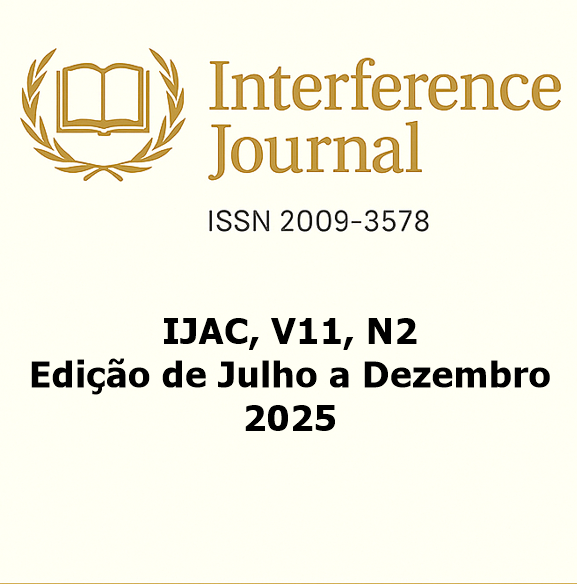Access to Medicines in Primary Health Care in Manaus: Educational and Technological Strategies
DOI:
https://doi.org/10.36557/2009-3578.2025v11n2p2831-2847Keywords:
Atenção Primária à Saúde. Assistência Farmacêutica. Acesso a Medicamentos. Inovação em Saúde. Serviços de Saúde.Abstract
The shortage of medicines is a constant issue in Primary Health Care, affecting both the quality of care and treatment adherence. This study aimed to report an intervention carried out at a Family Health Unit in Manaus, Amazonas, with the purpose of improving access to information regarding the availability of essential medicines. This is a qualitative and descriptive study, based on field observations and conversations with users and health professionals. A recurring lack of essential medicines and difficulties in providing guidance about the location of alternative stocks were observed. As part of the strategy, an informational banner was designed and implemented using technological resources, redirecting users to a digital platform where they could check, in real time, the availability of medicines in other units of the network. The intervention proved to be feasible, cost-effective, and well received by both users and the healthcare team, contributing to improved access, reducing unnecessary travel, and promoting patient independence. It can be concluded that the use of educational strategies combined with technological resources may reduce the effects of shortages, highlighting the importance of local and innovative solutions in Primary Health Care.
Downloads
References
COUBE, M. Inequalities in unmet need for health care services and medications in
Brazil. The Lancet Regional Health – Americas, 2023. Disponível em:
https://www.thelancet.com/journals/lanam/article/PIIS2667-193X(22)00243-5/fulltext.
Acesso em: 11 set. 2025.
FALEIROS, A. An analysis of the essential medicines policy in primary care:
findings from MedMinas project. Journal of Pharmaceutical Policy and Practice, 2022.
Disponível em: https://pmc.ncbi.nlm.nih.gov/articles/PMC9618643/. Acesso em: 11 set.
2025.
FIGUEIRÊDO, R. Preparation and validation of the instrument “QualiAPS digital—
Brazil” for assessing digital health care in primary health care. Frontiers in Public
Health, 2024. Disponível em: https://www.frontiersin.org/journals/public-
health/articles/10.3389/fpubh.2024.1443862/full. Acesso em: 11 set. 2025.
FRANCO, D. Analysis of the structure of Basic Health Units in Brazil to support
telehealth actions. BMC Health Services Research, 2024. Disponível em:
https://bmchealthservres.biomedcentral.com/articles/10.1186/s12913-024-11608-6.
Acesso em: 11 set. 2025.
MOULIN, A. Medicines Shortages Reporting Systems (MSRS): improving
transparency and supply chain resilience. Journal of Pharmaceutical Policy and
Practice, 2024. Disponível em:
https://www.sciencedirect.com/science/article/pii/S1551741124000573. Acesso em: 11
set. 2025.
OECD. Primary health care in Brazil. OECD Health Systems Report, 2021. Disponível
em: https://www.oecd.org/content/dam/oecd/en/publications/reports/2021/12/primary-
health-care-in-brazil_8ba611b2/120e170e-en.pdf. Acesso em: 11 set. 2025.
PEREIRA, R. Consumption and lack of access to medicines and associated factors in
the Brazilian Amazon: a cross-sectional study, Manaus. Frontiers in Pharmacology,
2020. Disponível em:
https://www.frontiersin.org/journals/pharmacology/articles/10.3389/fphar.2020.586559/
full. Acesso em: 11 set. 2025.
RODRIGUEZ, L. A systematic review of antibiotic drug shortages and the impact on
clinical practice. International Journal of Infectious Diseases, 2024. Disponível em:
https://www.sciencedirect.com/science/article/pii/S1198743X24004555. Acesso em: 11
set. 2025.
SOUZA, P. Public programs for essential medicine access in a small municipality:
hypertension and diabetes. Semantics Scholar, 2022. Disponível em:
https://pdfs.semanticscholar.org/6d0c/16e6f213fa4bfbbd909db43d4a35dffb59eb.pdf.
Acesso em: 11 set. 2025.
VOGLER, S. Drug shortage: causes, impact, and mitigation strategies. Journal of
Pharmaceutical Policy and Practice, 2021. Disponível em:
https://pmc.ncbi.nlm.nih.gov/articles/PMC8299364/. Acesso em: 11 set. 2025.
Downloads
Published
How to Cite
Issue
Section
License
Copyright (c) 2025 Rachel Christine Monteiro Pereira, Mariana Castro Ribeiro da Costa, Maria Clara de Queiroz Braz, Taylana Catete Tavares, Nadia Mercedes Enamorado Castillo, Dimas Melo Gonçalves, Marcello Facundo do Valle Filho

This work is licensed under a Creative Commons Attribution 4.0 International License.
Você tem o direito de:
- Compartilhar — copiar e redistribuir o material em qualquer suporte ou formato para qualquer fim, mesmo que comercial.
- Adaptar — remixar, transformar, e criar a partir do material para qualquer fim, mesmo que comercial.
De acordo com os termos seguintes:
- Atribuição — Você deve dar o crédito apropriado , prover um link para a licença e indicar se mudanças foram feitas . Você deve fazê-lo em qualquer circunstância razoável, mas de nenhuma maneira que sugira que o licenciante apoia você ou o seu uso.
- Sem restrições adicionais — Você não pode aplicar termos jurídicos ou medidas de caráter tecnológico que restrinjam legalmente outros de fazerem algo que a licença permita.


